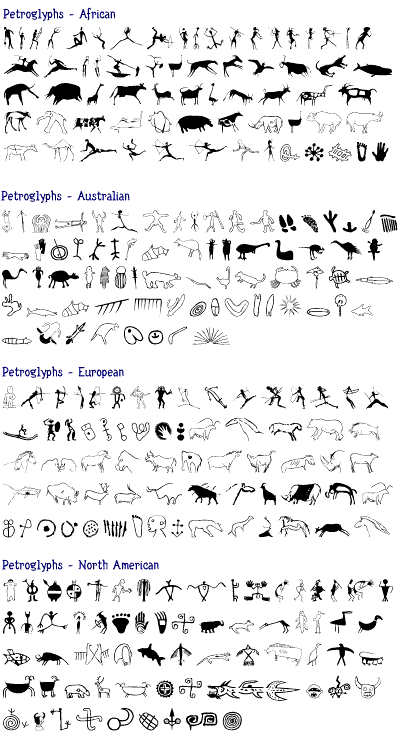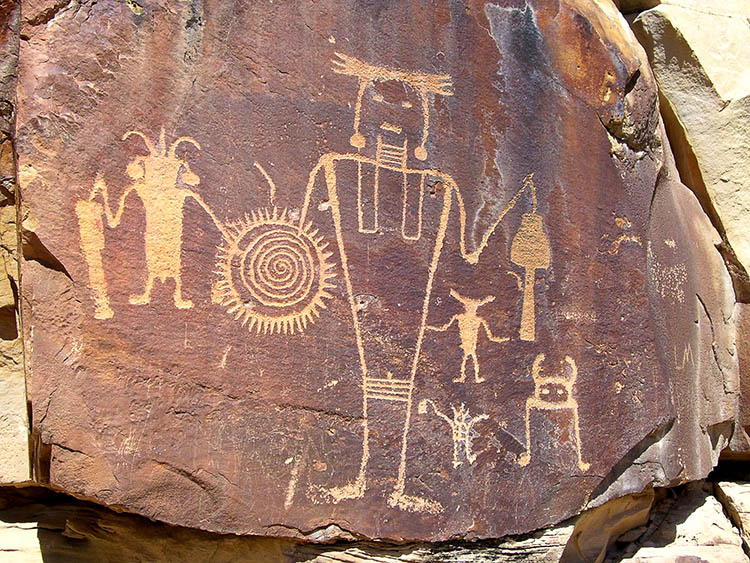

Pictographs or Pictograms Images Painted on Rock Face
Petroforms Human-made Boulder Forms
Geoglyphs Large Motifs on the Ground
Petroglyphs are images carved into rock that presume to tell a story of perhaps ancient astronauts or giants who visited planet Earth in the distant past - their stories carved in stone. Found throughout the world they are often associated with creation myths told and retold to this day by indigenous people. They are stories about gods who descended from sky and created or interacted with a race later to be known as humans.
Petroglyphs are often defined based on the culture, religious beliefs, mythologies, and legends of an ancient civilization placed on rock formations for their descendants. Many ancient petroglyphs are thought to represent some kind of ritual language often depicting with the same archetypes and symbols. It is interesting that the same symbols are found in different parts of the planet created in timelines where the people could not have possibly interacted with each other. Some believe this could be mere coincidence, an indication that certain groups of people migrated widely from some initial common area, or indication of a common origin.
Some theories suggest that petroglyphs were made by shamans in an altered state of consciousness, perhaps induced by the use of natural hallucinogens. Many of the geometric patterns (known as form constants) which recur in petroglyphs and cave paintings have been shown to be "hard-wired" into the human brain; they frequently occur in visual disturbances and hallucinations brought on by drugs, migraine and other stimuli.
Petroglyphs were an important form of pre-writing symbols, used in communication dating to approximately the Neolithic and late Upper Paleolithic boundary, about 10,000 to 12,000 years ago. Around 7,000 to 9,000 years ago, other writing systems such as pictographs and ideograms began to appear. Petroglyphs were still common though, and some less advanced societies continued using them much longer, even until contact with Western culture was made in the 20th century. Petroglyphs have been found in all parts of the globe except Antarctica with highest concentrations in parts of Africa, Scandinavia, Siberia, southwestern North America, and Australia.
One of the most common themes in rock art is the iconographic motif of the logarithmic spiral - reality created by algorithmic patterns that repeat in time - Simulation Theory.

Winnemucca Lake is a dried-up lake bed in northwest Nevada that features the oldest known petroglyphs in North America - dating between 14,800 and 10,500 years ago.
The rocks include both simple carvings - such as straight lines and swirls to more complex identifiable designs that resemble trees, flowers - and like other glyphs around the world seem to tell a story - repeated throughout time.
The glyphs are deeper and larger than those typically found in the Southwestern United States ranging in size from approximately 8 inches (20 cm) in width to 3 feet (0.91 m) and .4 to .8 inches (1.0 to 2.0 cm) in depth.
As with other rock art designs across the planet - the exact meaning of the abstract forms remains unknown yet features similar motifs.
This leaves one to potentially conclude that time travelers came to Earth setting everything in motion across the planetary game board - then left to observe their creation within a timeframe - as if a research project currently named The Human Experiment which as you know exists in a simulated reality wherein inserts are added and deleted as needed.
Legend has it the Winnemucca Lake Petroglyphs were created by a race of approximately seven-foot tall giants called the Si-Te-Chi (pronounced Set-Tee-Ka) who allegedly were white complected with red hair.

The Si-Te-Chi allegedly lived on Pyramid Lake in floating cities - then as with other legends about gods who came to Earth - they were gone leaving behind enigmatic evidence of their existence along with a message that they will one day return.
This is the same algorithm repeated in all civilizations - large and small - deleted from the situation or still existing in 'present time' - across the planet.
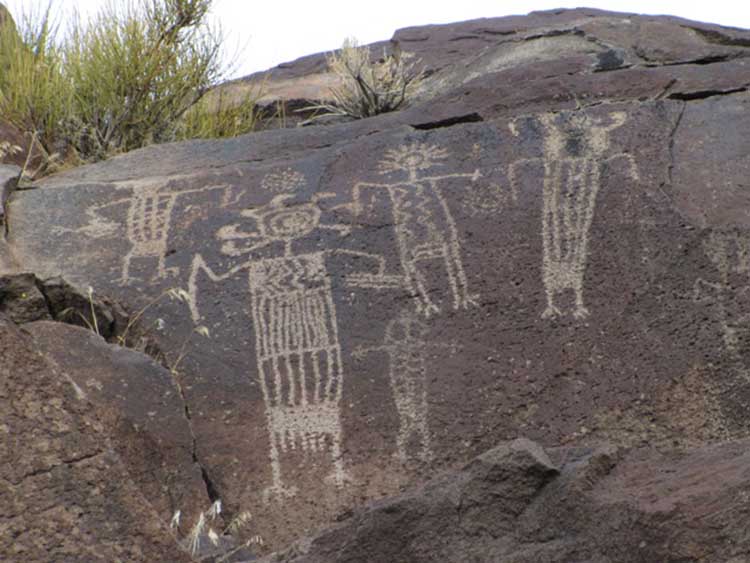
Coso Rock Art District, containing the Big and Little Petroglyph Canyons, is a rock art site containing over 100,000 Paleo-Indian and/or Native American Petroglyphs.
The Coso Range is between the Sierra Nevada and the Argus Range. Indian Wells Valley lies to the south of this location. This north-south trending range of about 400 square miles (1,000 km2) consists of rhyolitic domes and outcrops of volcanic rock. Also known as Little Petroglyph Canyon and Sand Tanks, Renegade Canyon is but one of several major canyons in the Coso Range, each hosting thousands of petroglyphs (other locations include Haiwee Springs, Dead End Canyon, and Sheep Canyon).
The majority of the Coso Range images fall into one of six categories: bighorn sheep, entopic images, anthropomorphic or human-like figures (including animal-human figures known as pattern-bodied anthopomorphs), other animals, weapons & tools, and “medicine bag” images.
Fortunately for the petroglyphs, most of the Coso Range is on the Naval Air Weapons Station China Lake, where visitation is restricted, vandalism is low, and preservation is most likely. China Lake is located near the towns of China Lake and Ridgecrest, California.
There are several other distinct canyons in the Coso Rock Art District besides the Big and Little Petroglyph Canyons. The most popular subjects are bighorn sheep, deer, and antelope. Big and Little Petroglyph Canyons were declared a National Historic Landmark in 1964. In 2001, they were incorporated into a larger National Historic Landmark District, called Coso Rock Art District. A November 2007 Los Angeles Times' Travel feature article includes it within a top 15 list of California places to visit.

At the Ancient Ruins in West Central Idaho along the Snake River, allegedly tell the story of Star Beings who recorded a Galactic War well over 30,000 years ago according to Indian Legend. The petroglyphs depict the beings that came here , their interaction with the inhabitants of an ancient city, and the war and destruction that ensued. We are shown their ships which are curiously triangular in shape, similar to those that have been recently sighted over Colorado, Arizona and California. We are also shown a portal through which some interdimensional beings came and went
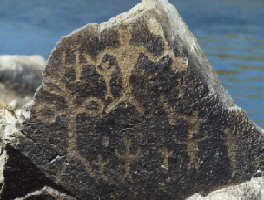
The waging of war between the Star Beings is recorded in the petroglyph to the right. The Star Beings and their counterparts, the two horned priests, are wreaking havoc upon the inhabitants of the Ancient City (represented by the smaller beings who are fleeing.)
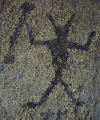
This petroglyph is located on a rock adjacent to the rock shown above. It depicts the two horned Priest. It should be noted that the dumbbell shaped apparatus held in his hand may represent an archtimeter. Reference to this can be found in Alice Bailey's writings, as well as in the hieroglyphs of Egypt. These tools are said to have wielded the power of life and death.
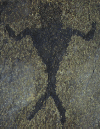
This being is very similar in appearance to Quetzalcoatl who is the Deity in the fabled city of Chichen Itza in Mexico, renowned for its Mayan Pyramids. He is often depicted at the controls of an ancient airship sometimes triangular in design.
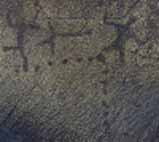
Star Beings emerging from triangular shaped ships
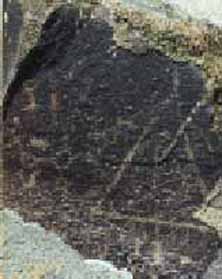
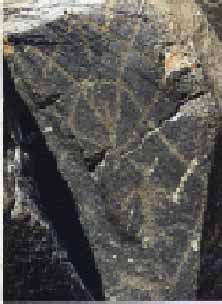
Possible Star Beings - Portal or UFO
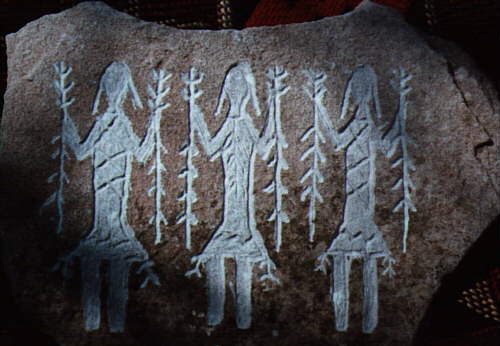
The Yei are supernatural Holy People who communicate between the Navaho and their gods. They are usually shown carrying pine boughs, yucca strips and rattles in healing ceremonies. Each petroglyph is hand crafted reflecting images and messages inspired by the Ancient Ones. Native stones are carefully selected for each petroglyph with no two alike.
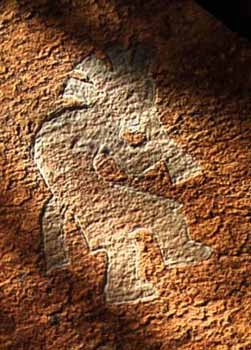
Kokopelli
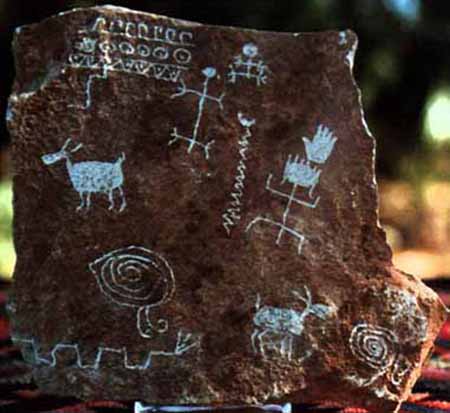
Kiva
Symbols from stone wall in the Village of the Great Kivas in New Mexico. Note the human, animal, snake and spiral figures were common to the area. Each petroglyph is hand crafted reflecting images and messages inspired by the Ancient Ones. Native stones are carefully selected for each petroglyph with no two alike.
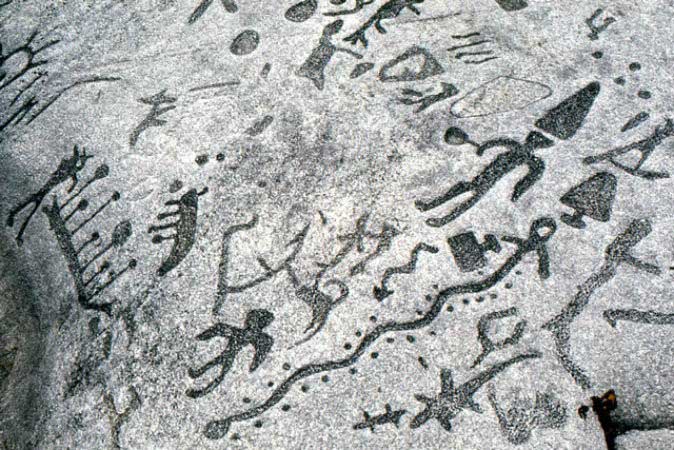
Petroglyphs Left in Canada by Scandinavians 3,000 Years Ago? Epoch Times - August 24, 2015
Hundreds of petroglyphs are etched on a slab of crystalline limestone about 180-by-100 feet (a third the size of a football field) in Peterborough, Canada. They may have been left by Algonquin Native Americans about a thousand years ago, or by Scandinavian traders a few thousand years ago. The latter claim flouts the common understanding of history, which places Europeans in the New World much later. But it has had a few prominent supporters. They say that the depictions of animals, solar symbols, geometric shapes, boats, and human figures on the so-called Peterborough Stone reflect a style used in the Old World.
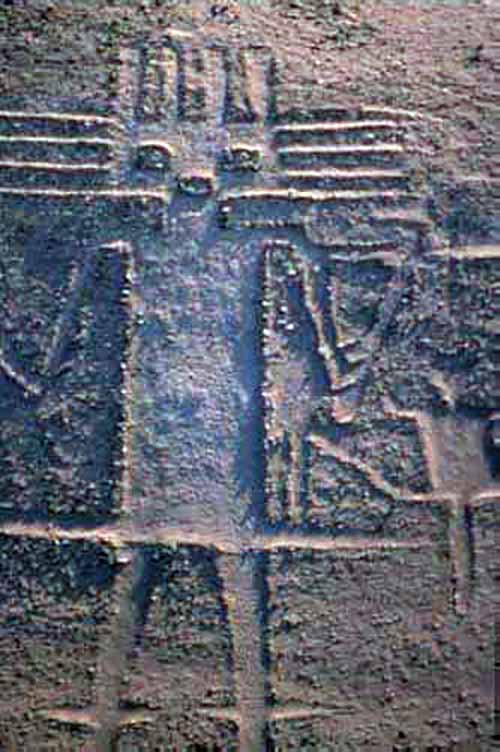
The Atacama Giant is an anthropomorphic geoglyph on the Cerro Unitas area of the Atacama Desert, Chile. At about 119 meters (390 feet), is the largest prehistoric anthropomorphic geoglyph. It has been suggested that the petroglyph represents a shaman, spiritual figure or deity, but there is little evidence to corroborate these claims.
The figure was an early astronomical calendar for knowing where the moon would set; by knowing this the day, crop cycle, and season could be determined. The points on the top and side of the head would say what season it would be depending on their alignment with the moon, zwhich was important in determining when the rainy season would come in the barren Atacama.
The Atacama Giant is one out of nearly 5,000 geoglyphs - ancient artwork drawn into the landscape - that have been discovered in the Atacama region in the last three decades. It is believed that they are the work of several successive cultures that dwelt in this region of South America, including the Tiwanaku and Inca.
2,000-year-old carvings of celestial bodies and animals discovered on rocky cliffs in Brazil Live Science - March 21, 2024
Brazilian archaeologists have discovered a vast number of 2,000-year-old rock carvings that depict human footprints, celestial-body-like figures, and representations of animals, such as deer and wild pigs. The discovery was made during three expeditions between 2022 and 2023 in Jalapao State Park, located in the state of Tocantins. Researchers identified 16 precolonial archaeological sites, all located on rocky cliffs close to each other.
Paleontology - Phallus
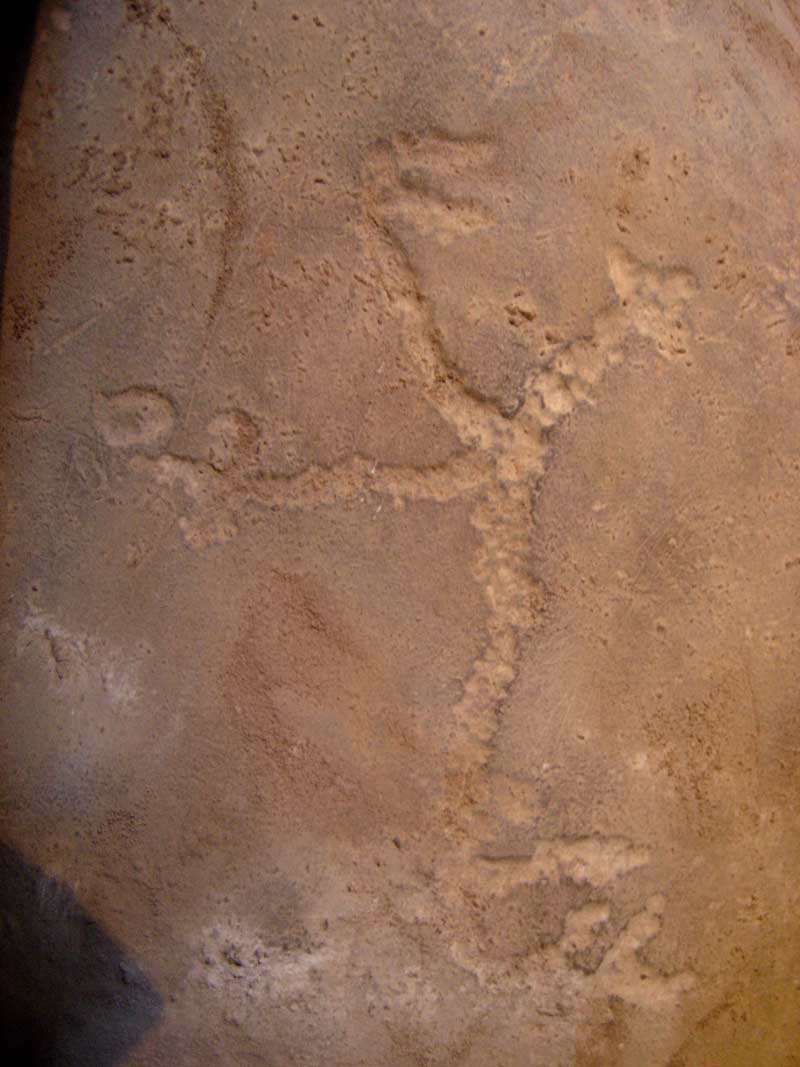
'Little Horny Man': Rock Carving of Giant Phallus Discovered Live Science - February 22, 2012
A stick figure man with a giant phallus dubbed "the little horny man" by its discoverers is the oldest rock carving found yet in the Americas, researchers say. These findings might shed new light on when the New World was first settled, scientists added. The time frame during which humans first reached the Americas remains hotly debated. One key to settling this controversy would involve uncovering early examples of human artifacts, such as art. Scientists discovered one ancient sample of such art in a cave named Lapa do Santo in central-eastern Brazil. The region is home to Luzia, the oldest human skeleton found to date in South America.
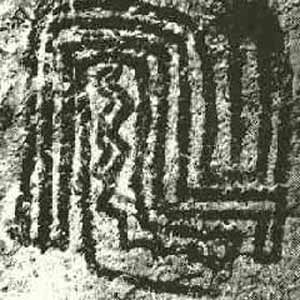
Snake Motif
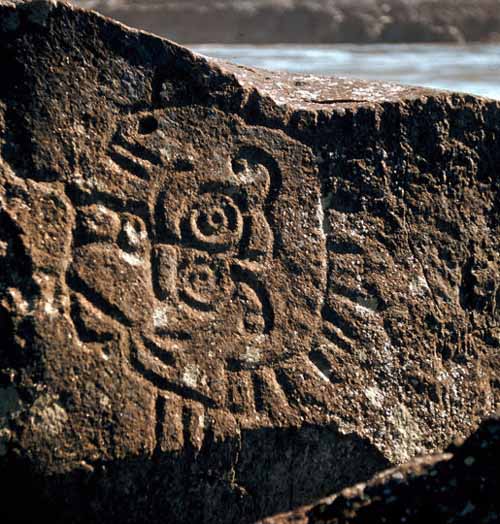
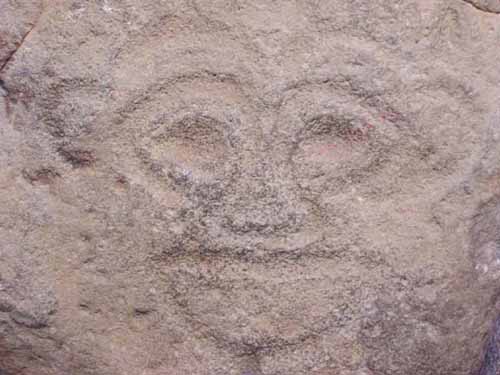
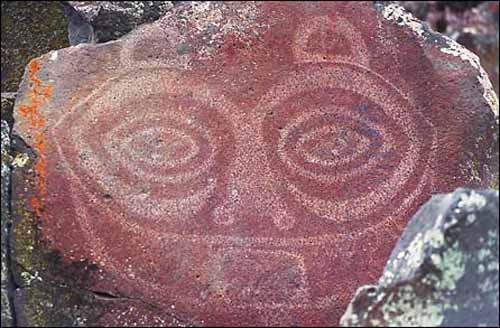
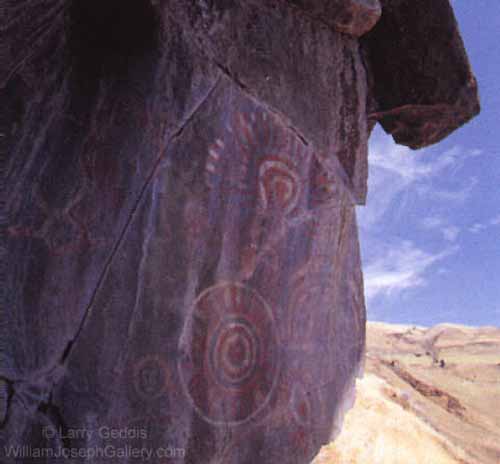
The activity of painting or engraving rocks in Colombia may have begun before the formative period. The scarce references seem to refer to activities which occurred much sooner than just a few years before the appearance of Spanish conquistadors. The differences in rock art themes, the variety of zones, the diversity of picture forms and engravings, seem to indicate that there existed long periods of rock art activity from the Paleo-indian to the classic Musica times. More than 700 pictograph and petroglyph zones have been discovered. Some rural traditions and beliefs have developed from some of the rock art design.
2,000-Year-Old Snake Engraving Is Among The World's Largest Rock Art IFL Science - June 4, 2024
2,000-year-old rock art, including nearly 140-foot-long snake, may mark ancient territories in Colombia, Venezuela Live Science - June 4, 2024
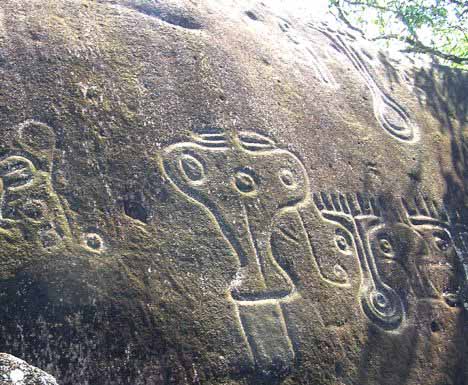
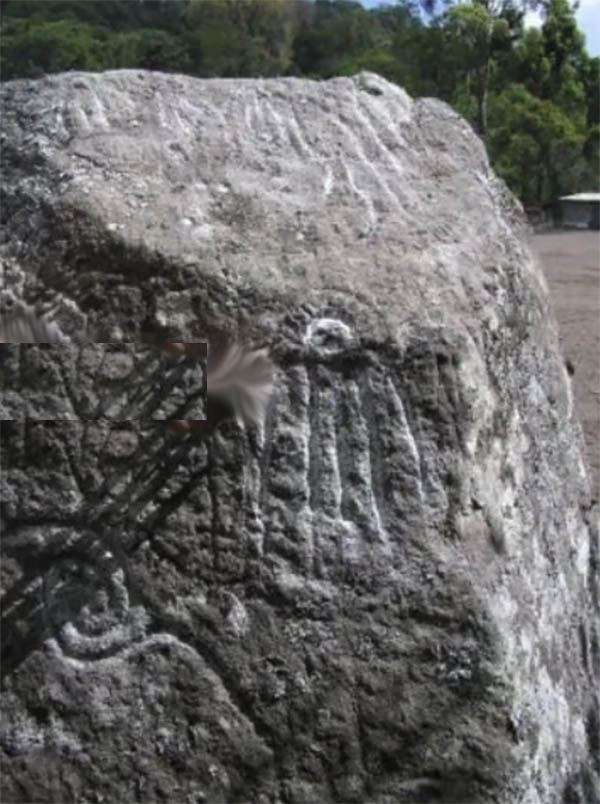
Ancient artists high on hallucinogens carved dancer rock art in Peru. The research notes similarities between the carvings in southern Peru and the ayahuasca-induced art of the Amazon's Tucano people Live Science - April 19, 2024
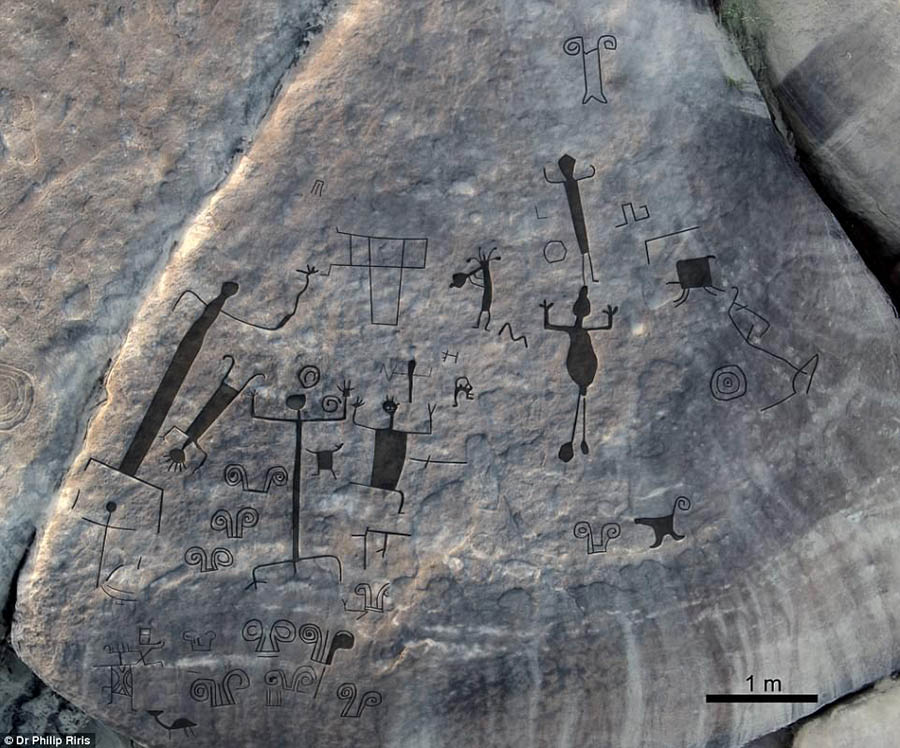
Mysterious 2,000-year-old rock art of mythical beasts and ancient rituals in Venezuela is revealed in unprecedented detail Daily Mail - December 7, 2017
They're thought to be some of the largest rock engravings in the world, and now scientists have mapped stunning carvings in Western Venezuela for the first time. The engravings, known as petroglyphs, are around 2,000 years old and include depictions of animals, humans and cultural rituals. Researchers hope that mapping the petroglyphs will shed new light into their archaeological and ethnographic context.
Jesuit priests described the area as home to the native Adoles people and the rapids were a key meeting point on trading route. Eight groups of engraved rock art were recorded on five islands within the Rapids. The largest panel is 304 square metres, and contains at least 93 individual engravings, the largest of which measure several metres across. Another engraving of a horned snake measures more than 30 metres in length. The team used drones to photograph the engravings, some of which are in highly inaccessible areas.

Ancient carvings in Turkey could be earliest solar calendar PhysOrg - August 6, 2024
Markings on a stone pillar at a 12,000-year-old archaeological site in Turkey likely represent the world's oldest solar calendar, created as a memorial to a devastating comet strike, experts suggest. The markings at Gobekli Tepe in southern Turkey - an ancient complex of temple-like enclosures adorned with intricately carved symbols - could record an astronomical event that triggered a key shift in human civilization, researchers say.
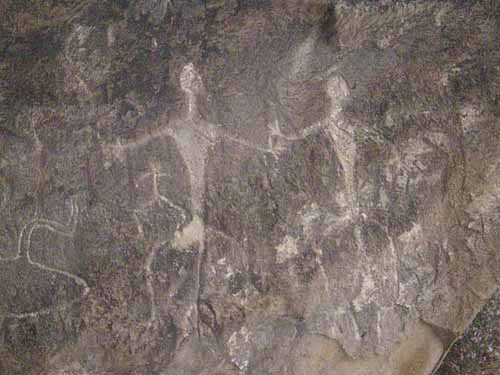
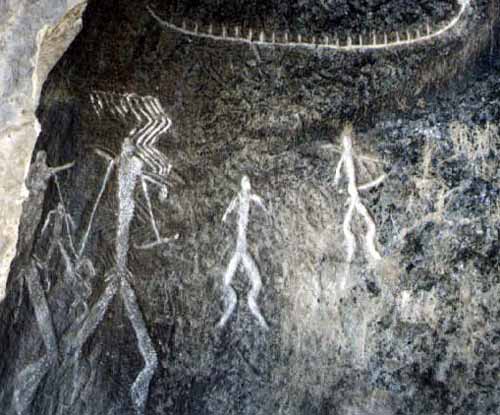
Stone Age petroglyphs Gobustan, Azerbaijan were not discovered by an archeological expedition. Their revelation came about quite by accident. In the 1930s, work was going on there in a stone quarry. The area is full of huge boulders and rock formations. One of the quarry workers noticed some unusual carvings on the rocks. The more the rocks were cut out, the more the paintings could be seen. (Before they had been hidden from view inside a huge pile of boulders.) Even more paintings were found inside what appeared to be man-made caves. Work at the quarry soon stopped so that the paintings could be examined more carefully.
In 1939, archeologist Isaak Jafarzade began the first archeological investigation of the petroglyphs at Gobustan. Between 1940 to 1965, teams identified and documented approximately 3,500 individual rock paintings on 750 rocks. The most ancient petroglyphs have been identified as belonging to the 12-8th century B.C. However, it is assumed that life existed here even earlier and that Gobustan was one of the cradles of civilization. This research was published in a book entitled "Gobustan" in 1978.
3,500-year-old rock art of wild sheep and double-humped camels revealed in Kazakhstan Live Science - June 3, 2024
Volunteers on an environmental clean-up in Kazakhstan uncovered rock art dating to the Bronze or Iron ages, but archaeologists say they already knew about the site. About 100 petroglyphs, dating back around 3,500 years, have been discovered in Kazakhstan. However, a scholar told Live Science that this discovery is not entirely new, as it had been kept a secret to protect the site until it could be examined more closely. Petroglyphs are engravings created by chipping away at a rock face. The petroglyphs that are reportedly new were discovered in the Zhambyl (also spelled Jambyl) region, located in southeastern Kazakhstan. They date back to the Bronze or Early Iron ages, according to the Astana Times, a news outlet in Kazakhstan.
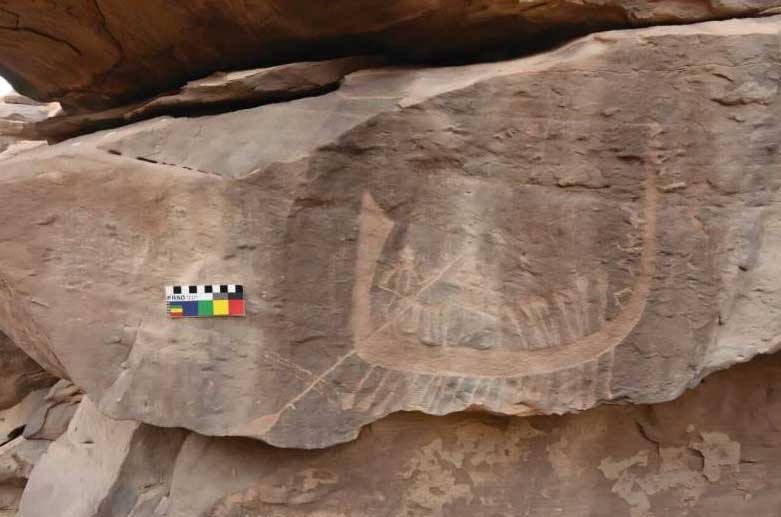
A rock art panel near Aswan, Egypt, may depict a rare example of an elite individual from the First Dynasty, shedding light on the formation of the ancient Egyptian state PhysOrg - July 10, 2025
The late 4th millennium BC was a key period in Egyptian history which saw the beginning of political unification across Egypt, ultimately leading to the formation of the Egyptian state by the first pharaoh, Narmer, about 3100 BC. However, little is known about how this pivotal process in prehistory took place. The late 4th millennium BC was a key period in Egyptian history which saw the beginning of political unification across Egypt, ultimately leading to the formation of the Egyptian state by the first pharaoh, Narmer, about 3100 BC. However, little is known about how this pivotal process in prehistory took place.
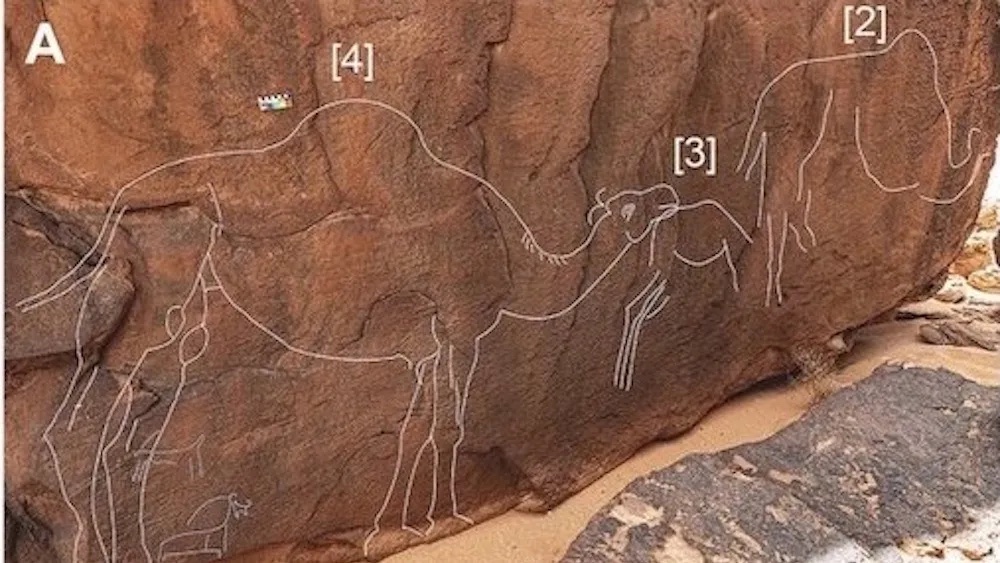
Mysterious and beautifully carved life-size camel carvings created thousands of years ago discovered in Saudi Arabian desert Live Science - September 30, 2023
Archaeologists have documented a cluster of carvings depicting camels on a rock outcropping near the southern edge of Saudi Arabia's Nafud desert. The monumental artwork portrays a dozen life-size wild camels, a now-extinct species that once roamed this swath of the Arabian Peninsula desert thousands of years ago but has never received a scientific name
Paleo-Arabic inscriptions on rock were made by Prophet Muhammad's unconverted companion, study finds Live Science - July 11, 2024
A Paleo-Arabic inscription on a boulder near an abandoned mosque in Saudi Arabia may have been carved by Hanzalah bi Abi Amir a companion of the Islamic prophet Muhammad, a new study finds. Although many inscriptions from the early days of Islam are known, their authorship remains unconfirmed, except for one in Saudi Arabia's al-Bahah region that can be securely attributed to Muhammad's companion, who later became the governor of Mecca.
The inscription, which researchers analyzed in a new study published in the April issue of the Journal of Near Eastern Studies, is only the second confirmed inscription whose attribution connects to Muhammad. Unlike the former text, this one was carved in the early seventh century before Islam came to dominate Arabia, making it an important witness to the pre-Islamic Hijaz (the region where Mecca is located) and the religious background of the Quran's audience.
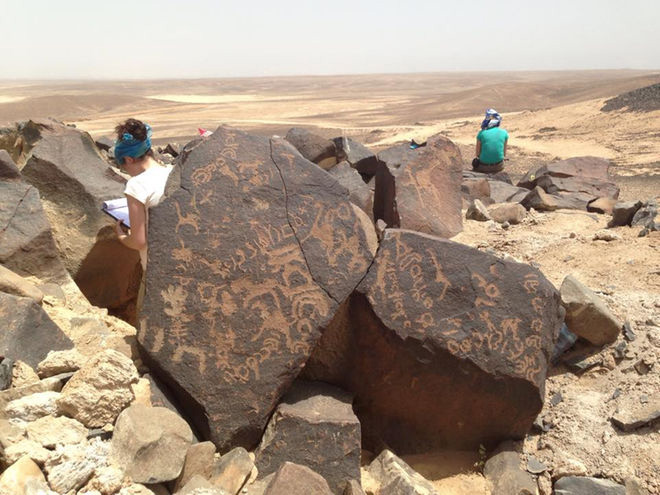
Thousands of Ancient Inscriptions and Rock Art Found in Jordan's Black Desert Live Science - November 21, 2016
Ancient Inscriptions Show Life Once Flourished in Jordan's 'Black Desert' Live Science - November 21, 2016
Thousands of inscriptions and petroglyphs dating back around 2,000 years have been discovered in the Jebel Qurma region of Jordan's Black Desert. They tell of a time when the now-desolate landscape was teeming with life. The inscriptions are written in Safaitic, an alphabetic script used by people who lived in parts of Syria, Jordan and Arabia in ancient times. Research is ongoing, but the archaeologists say their finds indicate that around 2,000 years ago, Jebel Qurma had trees, wildlife and a sizable human population.
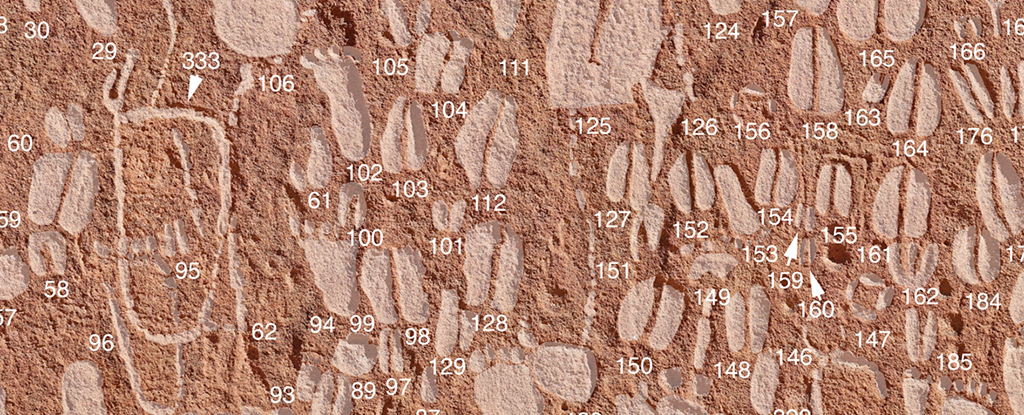
Prehistoric Carvings Are So Accurate, Animals' Sex, Age, And Species Can Be Determined Science Alert - October 2, 2023
The animal footprint carvings you can find in the Doro Nawas Mountains of western Namibia are quite something: the artists have captured the tracks so accurately, they can reveal plenty of useful information about the animals they represent.
4,000-year-old rock art of boats and cattle unearthed in Sudan paint a picture of a green Sahara Live Science - June 6, 2024
Thousands of years ago, a large swath of the Sahara may have been a green grassland ideal for raising cattle. Deep in the Sahara, ancient rock art depicts a fleet of boats and cattle, providing a glimpse of the desert's green past before climate change transformed the region thousands of years ago. Archaeologists were surprised to discover the out-of-place artworks from 16 new rock sites in the middle of the Eastern Desert (also known as the Atbai), a sandy and barren landscape that is part of the Sahara and stretches across eastern Sudan. The site's location is surprising for two reasons: It's far from the nearest body of water, Lake Nubia, which sits more than 60 miles (97 kilometers) away, and the arid landscape is not ideal for raising livestock like the large-horned cattle featured in the drawings, the study authors said.
5,000-Year-Old Rock Art Discovered In India Could Be Oldest Depiction Of Supernova Tech Times - January 9, 2018
A 5,000-year-old rock art from India is garnering the attention of astrophysicists because it could actually be the earliest known star chart ever discovered and the first to depict a supernova. The rock art, which shows figures of humans and animals below a sky where two objects seem to be shining brightly, is said to date back to between 2100 and 4100 BC. It was found in the Northern Indian state of Kashmir.
At first, the human and animal figures were thought to be a fragment of a hunting scene. Detailed research, however, indicates that the animal and human figures actually represent patterns of stars and the two bright objects depict either the moon or sun and a supernova.
In view of its nearly circular shape and same horizontal position of the two objects, comets, halos, and terrestrial events also seem unlikely. Researches considered the possibility that the observed object is a supernova.
